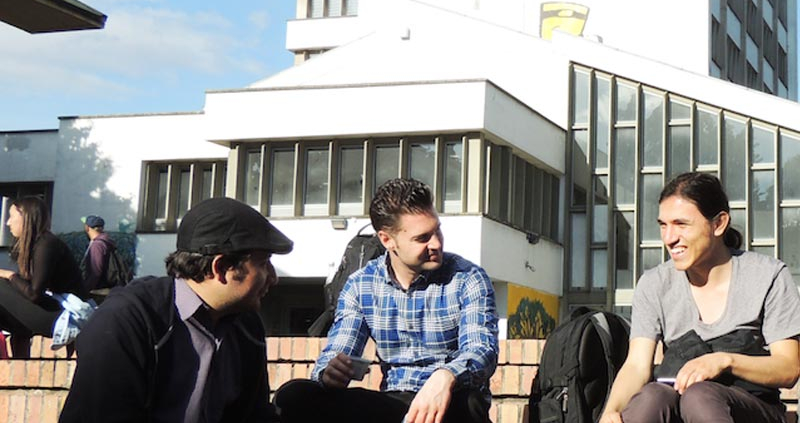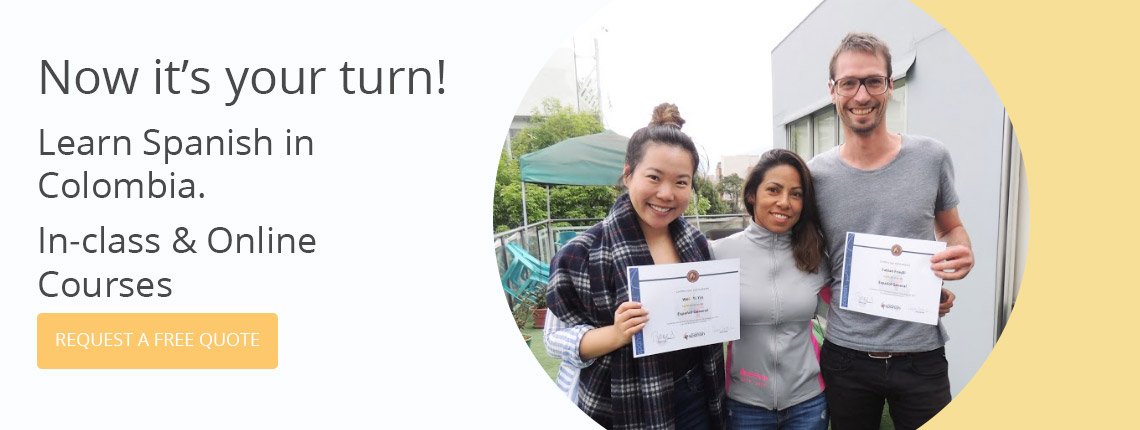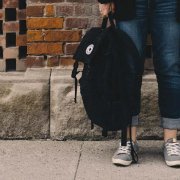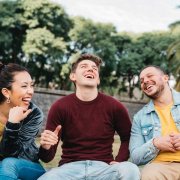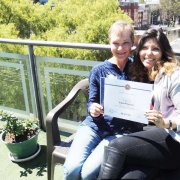Getting used to the different Colombian accents
In our previous post, we talked about the different Colombian accents and dialects.
When you visit Colombia, you will meet people from different regions. They all have their own accent, dialect, and slang. So, it’s important you get familiar with the differences.
One of the activities at Our School is to recognize the different Colombian accents.
Listen to the following audios from an activity our LMTS teachers did.
They asked a Paisa, Caleño, Costeño and Chocoano to read the same text and to answer some questions.
Tune your ear!
Paisa accent
Transcript
“Hola amigo, qué vas a hacer esta noche?”
(Hey buddy, what are you doing tonight?)
Transcript
“Los colombianos somos chéveres, alegres, amables. Nos gusta rumbear y tomar café”
(Colombians are cool, happy and kind people. We like to party and to drink coffee)
Transcript
“ – Jueves y viernes santo, en Marzo y Abril. No se come carne y mucha gente viaja.
– Navidad, el 25 de Diciembre hacemos algo familiar.
– Y, año nuevo, el 1 de enero. Ese día todo está cerrado y hacemos paseo de olla”( – Maundy Thursday and Holy Friday it’s in March and April. Those days we don’t eat meat, and many people go on holidays.
– Christmas it’s on the 25th December. On that day we stay with our family
– And, New Year ‘s on the 1st January. On that day everything is closed. We do “Paseo de olla”)
Costeño accent
Transcript
Cómo son los colombianos? -Los colombianos somos chéveres, alegres, amables y nos gusta rumbear y tomar café.
Qué fiestas colombianas conoces? – El Carnaval de Barranquilla, la Feria de las flores y el Carnaval de blancos y negros.
Menciona tres festivos en Colombia – Jueves y viernes santo en marzo y abril. No se come carne y mucha gente viaja. Navidad el 25 de Diciembre, hacemos algo en Familia. Y año nuevo, ese día todo está cerrado y hacemos paseos de olla.What are Colombian people like? -Colombians are cool, happy and kind people. We like to party and to drink coffee.
What Colombian traditional festivities do you know? – Barranquilla Carnival, The Flowers Festival and Blacks and Whites’ Carnival.
Name three Colombian holidays?
Thursday and Holy Friday, it’s in March and April. Those days we don’t eat meat, and many people go on holidays.
Christmas, it’s on the 25th December. On that day we stay with our family
And, New Year it’s on the 1st January. On that day everything is closed. We do “Paseo de olla”)
Cultural Tip: “Paseo de olla”, it’s translated in English as “Pot gathering”. In a traditional paseo de olla, families and friends gather together in a nearby natural area -normally by the river-. They bring the ingredients and supplies necessary to cook traditional sancocho soup over a fire.
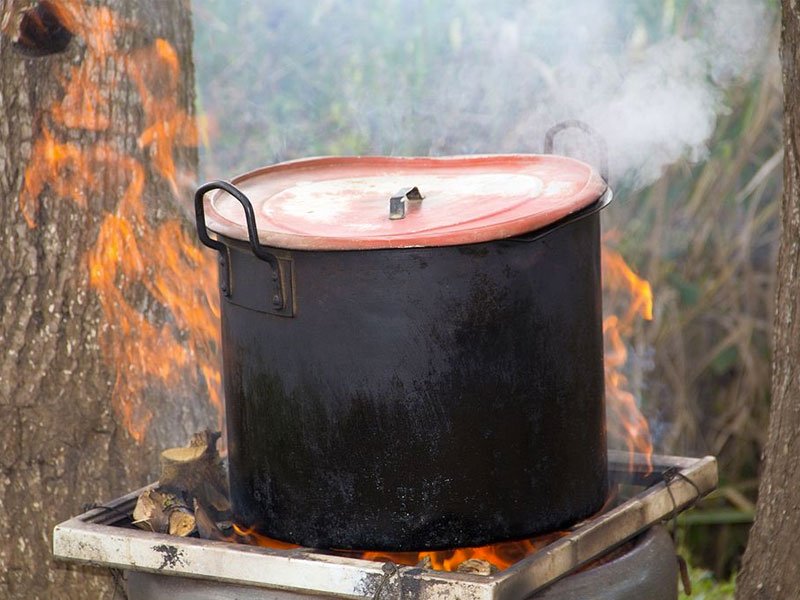
Sancocho de Gallina: Juliocesarat / CC BY-SA (https://creativecommons.org/licenses/by-sa/3.0)
Chocoano accent
“Pues un viernes normalmente por la noche se parcha uno con los amigos en la esquina. Las esquinas son como las famosas tiendas de barrio entonces se sienta uno ahí a joder, a recochar, de todo. Y ya si más tarde la cosa se pone buena nos vamos para una barra o una discoteca. Pero eso es lo que normalmente hago en un viernes por la noche; obviamente no todos los viernes pero si uno que otro.”
(On a Friday night, we normally hang out with friends on the corner. The corners are those famous little local shops, we stay there to have fun joking, mess around, everything. Then, if later in the night we are up to do something we go to a bar or to a club. This is what I normally on a Friday night; I obviously don’t do it every weekend but just once in a while”
How about the other Colombian accents?
Now, let’s do another exercise. Let’s watch some videos with other Colombian accents but without English subtitles.
It’s also a good exercise to tune your ears!
Caleño accent
In this video, you can see a very good representation of the dialect spoken in Cali and Valle del Cauca region.
Rolo accent
This video is an old interview from a TV show called Yo Jose Gabriel to Jaime Garzón. He was a Rolo comedian, journalist, politician, and peace activist. He was popular on Colombian television during the 1990s for his political satire.
Opita accent
This is a street interview from a local Opita journalist to a street vendor of the region
Llanero accent
Interview from a young student to a typical llanero man
Pastuso accent
This video is about a local initiative from Nariño region. It aims to promote the dialect, accent and slang spoken in the region.
Insular accent
This is an interview from Carlos Vives to Elkin Robinson. They are famous Colombian artist. Carlos Vives is from Santa Marta (costeño) and Elkin Robinson is from Providencia.
Did you find the differences between the different accents and dialects? Is there any accent you like more?
If you want to learn more about the Spanish language read our weekly blog to learn more about Colombian culture!

